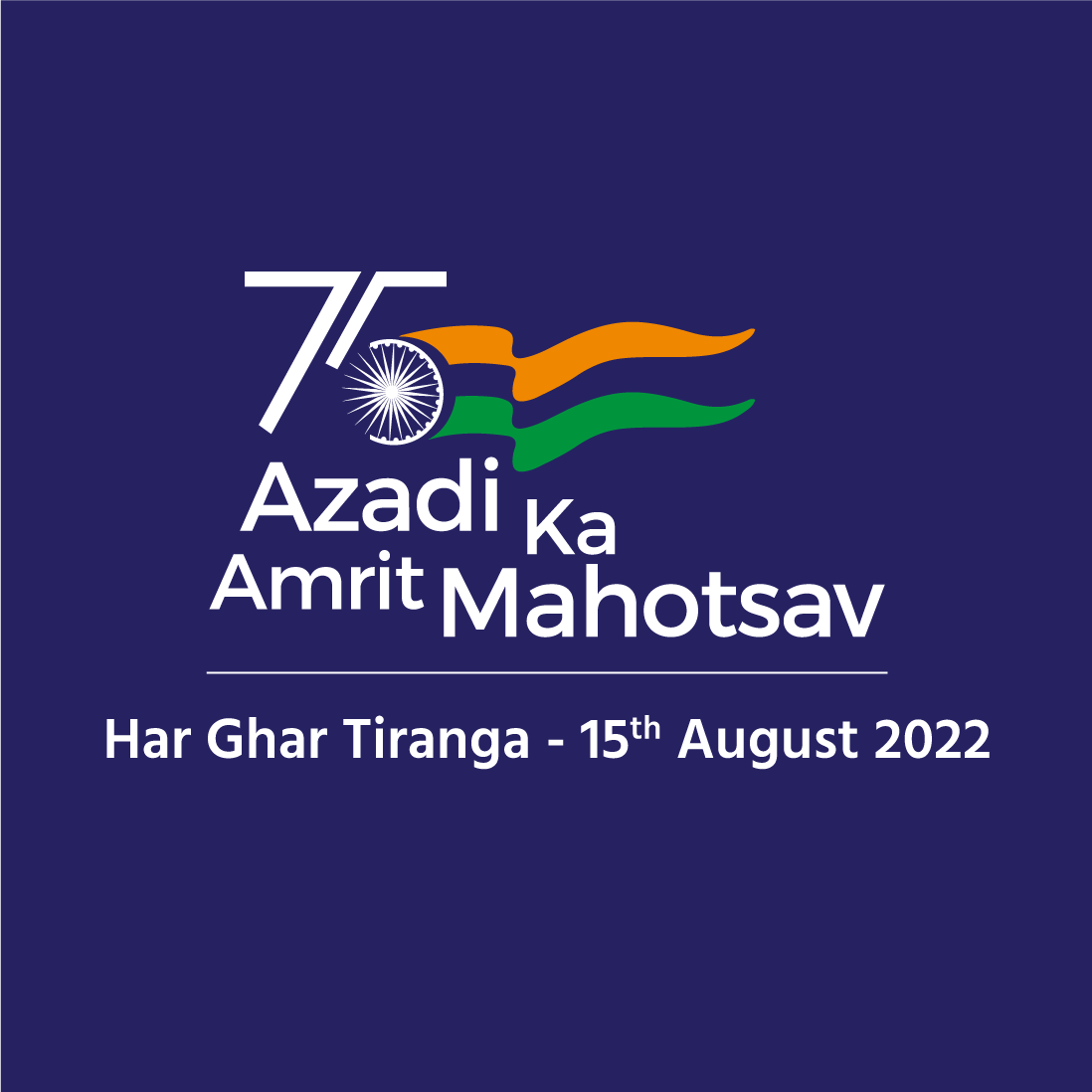
Indian Council of World Affairs
Sapru House, New DelhiIndia-Sri Lanka MoU on Defence Cooperation: An Important Shift in Policy
The Memorandum of Understanding (MoU) on Defence Cooperation signed by India and Sri Lanka, for the first time, during the visit of Indian Prime Minister Shri Narendra Modi, to Sri Lanka (4-6 April, 2025) signals an important shift in consolidating bilateral defence relations. The agreement can be seen as part of India’s push for broader regional security, and expected to bring greater convergence between the two countries on security matters both at the bilateral and regional level, given the present Indian Ocean geo-politics.
Background
Historically, India and Sri Lanka’s divergent security interests and regional security outlook acted as an impediment to develop a defence cooperation agreement, at the bilateral level. For years after independence, Sri Lanka saw the close defence and external relations with the West particularly with Britain and the US, as a safety net, for the newly independent island nation[1]. Sri Lanka was also one of the first countries to join the Commonwealth. At the domestic level, the Tamil ethnic issue within Sri Lanka and India’s response to the same, given the spillover effect on India’s security had dominated the security perception of both the countries towards each other, which was mostly characterised by inadequate trust and discomfort. In post-IPKF (Indian Peace Keeping Force) years, India maintained a pragmatic policy of non-intervention[2]. In 1991, India declared the Liberation Tigers of Tamil Eelam (LTTE) as an unlawful organisation following the assassination of the then Indian Prime Minister Rajiv Gandhi. India also pro-actively worked to establish smooth relations with the government of Sri Lanka and consistently insisted on political means to resolve the Sri Lankan Tamil issue and maintained an overall positive agenda of dialogue and cooperation.
In post-civil war years (since 2009), India engaged with the government of Sri Lanka at multiple fronts to bridge the trust deficit. It worked towards strengthening security relations along with robust humanitarian and development assistance. Furthermore, it also worked towards building a number of institutional mechanisms for defence cooperation at the bilateral level, including, capacity building and training, of Sri Lankan security forces, joint military exercises, joint patrols etc. Annual defence dialogue was initiated in 2012, which is a highest institutional interactive mechanism between the armed forces of both countries.[3]
The changed political and security atmosphere in Sri Lanka in post-civil war years also provided an opportunity for Sri Lanka to engage with external actors to bring required investments in economic and strategic sectors. For instance, it joined the Belt and Road Initiative (BRI) in 2014. Hambantota port, located in the Southern part of the country was leased to China for 99 years in 2017. Sri Lanka strengthened its relations with China. On the other hand, defence diplomacy and cooperation between Sri Lanka and Pakistan also strengthened in post war years.[4] In 2016, Pakistan provided eight JF-17fighter aircrafts to Sri Lanka after signing the defence agreement.[5] Both the countries have regularly interacted through port calls, and military and naval training exercises.
Sri Lanka’s strategic geographical position in the IOR and, its close ties with countries inimical to India’s security interests called for a cautious approach and engagement by India with Sri Lanka to secure strategic space in the region and to promote peace and stability. In this context, the Trilateral Maritime Security Cooperation Agreement signed in 2011, comprising India, Sri Lanka and Maldives, to arrive at a common understanding on maritime security in the IOR was an important initiative. The agreement provided a platform to discuss traditional as well as non-traditional security threats in the region.
Significance of MoU in present context
There is a regional security context to India’s push for enhancing defence and maritime security cooperation with island states in the IOR including Sri Lanka. Under the vision of Security and Growth for All in the Region (SAGAR), now elevated to MAHASAGAR (Mutual and Holistic Advancement for Security and Growth Across Regions) India has been trying to strengthen defence cooperation with the island states in the region over the last decade.[6] Achieving free, open, secure and safe IOR has been India’s priority given the presence of various powers in the region. Other than China, the UK, the US, France too have their strategic presence in the region. The UAE, Saudi Arabia, Russia, Turkey, Pakistan are other important actors seeking to play a prominent role in the region mainly through strategic investments, arms supply, naval exercises etc. Since the region accounts for fifty percent of world maritime trade and seventy percent of global trade in oil and gas, there is a greater need to safeguard the sea lanes of communication. The increasing strategic significance of island states in the region therefore assumed importance. The island states such as Sri Lanka is looking to play a much bigger role by leveraging their geographical location. India has been cautious of the geopolitical and strategic atmosphere in the region and has therefore been trying to engage fruitfully with the island states, to secure a prosperous region. This has reflected in India’s vision of “MAHASAGAR” for the Global South for maritime security and trade. The vision was unveiled during the Indian Prime Minister’s visit to Mauritius in 11-12 March, 2025.
At the regional level, both the countries are working towards developing a common understanding of challenges faced in traditional and non-traditional realm. Discussion at various high-level visits have reaffirmed their commitment to collaborate on common challenges.[7] The need for a convergence towards regional security issues led to active involvement in the Colombo Security Conclave (CSC). The CSC, which started as a trilateral security mechanism between India, Sri Lanka and Maldives in 2011, now includes, Mauritius and Bangladesh as members. Seychelles is an observer state. There are other platforms such as the Information Fusion Centre-Indian Ocean Region (IFC-IOR), which is based in India, and has eleven partner countries including Sri Lanka, to enhance maritime awareness and share information. There are other arrangements like the Indian Ocean Rim Association (IORA) (Sri Lanka is the current chair of (IORA), Indian Ocean Naval Symposium (IONS), Indian Ocean Commission (IOC) and The Bay of Bengal Initiative for Multi-Sectoral Technical and Economic Cooperation (BIMSTEC) which also look at geo-political and security issues in India’s southern neighbourhood.
At the bilateral level, the MoU on defence cooperation, signed after nearly four decades of the Indo-Sri Lanka Agreement of 1987, signals a renewed trust and convergence in dealing with security matters and recognition that each other’s security interests are interlinked[8]. The MoU according to India will provide further impetus to the existing defence partnership[9]. The MoU will remain in force for five years and can be terminated by either party, by providing a three months advance notice. Enhancing defence cooperation had figured in talks during the first official visit of President of Sri Lanka, Anura Kumara Dissanayake to India in December 2024.
The continuation of capacity building exercises, under successive governments in Sri Lanka by India helped in building a better understanding of each other’s security needs and priorities. For example, the installation of the Maritime Rescue Coordination Centre (MRCC) for the Sri Lankan Navy under the Government of India grant was commissioned on 24 June 2024 during the official visit of the Indian External Affairs Minister to Colombo. Sri Lankan Air Force is operating the Indian Navy Dornier aircraft at Trincomalee since August 2022, for maritime surveillance activities. Annually, India also offers around 1200 training vacancies for Sri Lankan Armed Forces. In addition, India has been a ‘first responder’ for Sri Lanka, in tackling natural disasters and in averting environmental damages. In the year 2020 and in 2021, the Indian Navy extended help to the Sri Lankan Navy to minimise environmental damage from oil spills from ships such as MT New Diamond and MV XPress Pearl.[10]
Challenges
The MoU on defence cooperation was also signed at a time when Sri Lanka is slowly on the path to recovery and exploring various avenues to strengthen political, economic and security relations with external actors both at the bilateral and regional levels. At the regional level, it is aiming to become a major trade and maritime hub in the region by using its geographical advantage a vision which India is supportive of through support and collaboration.[11] It is also walking a tightrope to maintain its policy of neutrality in foreign policy while engaging with external actors. This is evident from various statements made by the leadership in Sri Lanka on external engagement. For example, despite the economic and political setback in recent years, Sri Lanka did not shy away from making its position clear on its relations with India and China. The President of Sri Lanka insisted that, India and China are close partners and valued friends to the island nation’.[12] He emphasised that, ‘Sri Lanka will pursue a balanced foreign policy, avoiding entanglement in the geopolitical struggles between China and India’.[13] The government in Sri Lanka is also working towards maintaining a productive relationship with the European Union, the Middle East and Africa.[14]
The pro-active diplomacy of Sri Lanka is visible in the number of visits that are undertaken and the agreements signed by the Government of Sri Lanka with foreign counterparts including with China. In the Joint Statement issued during the visit of the President of Sri Lanka to China, enhancing security cooperation was recognised as an important component of bilateral cooperation.[15] Sri Lanka is also looking to enhance maritime cooperation with China in the field of ‘maritime domain awareness, maritime rescue and disaster relief, and maritime personnel training and capacity building, to build a maritime community with a shared future’.[16] Sri Lanka also affirmed its commitment to China’s Global Security Initiative (GSI), which focuses on resolving disputes through dialogue and, addressing traditional and non-traditional security challenges, among other things.[17]
The port calls by Chinese research vessels as well as submarines in waters of Sri Lanka became a cause for concern for India. The Chinese research ship Shi Yan 6 docked in Colombo port in October 2023, while in 2022 the navy vessel Yuan Wang 5 docked at Hambantota in southern Sri Lanka. After China sought permission to dock another research vessel in Sri Lankan waters in January 2024, Sri Lanka took a decision to impose a ban on the docking of foreign vessels for one year. Sri Lanka then explained that the decision was taken to “build capacity participate in such research activities as equal partners with other countries”.[18] It lifted the ban in January 2025. Meanwhile, the government also prepared a Standard Operating Procedure (SOP) for foreign military vessels and aircraft arriving in waters of Sri Lanka to address concerns of neighbouring India as well as other international actors such as the US, over the increasing visit of Chinese research vessels and submarines to Sri Lanka.[19]
Recently, according to reports, a joint naval exercise planned between Sri Lanka and Pakistan near Trincomalee waters, a strategically vital deep-water port in the IOR has been shelved due to India’s concern.[20] During the recent visit of Indian Prime Minister to Sri Lanka, India, Sri Lanka and the United Arab Emirates (UAE) signed a tripartite agreement, to develop Trincomalee as a regional energy hub. To address India’s concerns, President of Sri Lanka emphasized on ‘not permitting Sri Lanka’s territory to be used in any manner inimical to the security of India as well as towards regional stability’.[21] The same position has been reiterated by the Sri Lankan President during the visit of Indian Prime Minister to Sri Lanka in April 2025. Nonetheless, there are some comments in sections of the Sri Lankan media that ‘Sri Lanka’s military relations with Pakistan are robust, and recent developments may not impact the overall military to military relations, which have often flown under the radar for long’.[22]
The defence MoU, received mixed reactions at the domestic level in Sri Lanka. The opposition Samagi Jana Balawegaya (SJB) urged the government to reveal the contents of the defence agreement, to allow a domestic discourse on the benefits and dangers of the agreement’[23]. The party demanded that since the agreement was signed between two countries, the Cabinet of Ministers and the Parliament must be apprised of the contents of the agreement.[24] The MoU generated concern in some quarters of Sri Lanka citing the lack of transparency. For instance, the Frontline Socialist Party (FLSP), a breakaway faction of the ruling Janatha Vimukthi Peramuna (JVP), expressed concern that it can lead to increased Indian influence over Sri Lankan assets.[25]
Conclusion
The MoU on defence cooperation between India and Sri Lanka can be seen as an important shift in bilateral relations, given the present regional dynamics. It may also be seen as a shift in favour of India in the India-Sri Lanka-China axis which would need further consolidation through robust implementation of the bilateral defence MoU. This also reflects the trust both the countries have nurtured in recent years, to navigate differences in the security outlook in an increasingly contested region. Whether the pragmatic approach adopted by both the countries will contribute to convergence in security outlook bilaterally and regionally, however, in remains to be seen.
*****
*Dr. Samatha Mallempati, Research Fellow, Indian Council of World Affairs, New Delhi.
Disclaimer: The views expressed are personal.
Endnotes
[1] Chandani Kirinde, “Factum Perspective – Sri Lanka’s Foreign Policy since independence, which leader did it best?”, 11 December 2021, https://factum.lk/regional-geopolitics/factum-perspective-sri-lankas-foreign-policy-since-independence-which-leader-did-it-best/. Accessed on April 21, 2025.
[2] M.Mayilvaganan, “Engaging Post-LTTE Sri Lanka: India’s Policy Options”, India Quarterly, March 2012, Vol.68, No.1 (March 2012), P.18.
[3] “Defence Secretary & his Sri Lankan counterpart review bilateral ties during 7th Annual Defence Dialogue in New Delhi; Agree to increase the complexity of bilateral exercises”, 23 February 2023, https://www.pib.gov.in/PressReleasePage.aspx?PRID=1901757. Accessed on April 25, 2025.
[4] South Asia Monitor, “Sri Lanka, Pakistan defense relations are getting stronger”, 23 July 2020, https://southasiamonitor.org/diplomacydisputes/sri-lanka-pakistan-defense-relations-are-getting-stronger. Accessed on April 22, 2025.
[5] Riaz Khokhar and Asma Khalid, “Reviewing Pakistan-Sri Lanka Relations”, 22 March 2021, https://www.stimson.org/2021/reviewing-pakistan-sri-lanka-relations/. Accessed on April 21, 2025.
[6] “India, Mauritius strengthen defence, maritime security, and cultural ties”, 12 March 2025, https://ddnews.gov.in/en/india-mauritius-strengthen-defence-maritime-security-and-cultural-ties/#:~:text=Maritime%20Security%20and%20Defence%20Cooperation&text=The%20Prime%20Minister%20of%20Mauritius,hydrographic%20surveys%2C%20and%20regular%20patrolling. Accessed on April 24, 2025.
[7] Ministry of External Affairs, Government of India, “India - Sri Lanka Joint Statement: Fostering Partnerships for a Shared Future”, 16 December 2024, https://www.mea.gov.in/incoming-visit-detail.htm?38797/India++Sri+Lanka+Joint+Statement++Fostering+Partnerships+for+a+Shared+Future. Accessed on April 19, 2025.
[8] Ministry of External Affairs, Government of India, “Transcript of Special briefing by MEA on Prime Minister’s visit to Sri Lanka (April 05, 2025)”, 5 April 2025, https://www.mea.gov.in/media-briefings.htm?dtl/39378/Transcript+of+Special+briefing+by+MEA+on+Prime+Ministers+visit+to+Sri+Lanka+April+05+2025. Accessed on April 20, 2025.
[9] Ibid
[10] High Commission of India, Colombo, “India-Sri Lanka Bilateral Relations”, As on 21 March 2025, https://www.hcicolombo.gov.in/page/india-sri-lanka-bilateral-relations/. Accessed on April 20, 2025.
[11] President of Sri Lanka Office, “The Full Speech Delivered by President Anura Kumara Dissanayake at the Inauguration of the First Session of the Tenth Parliament”, 21 November 2024, https://www.presidentsoffice.gov.lk/the-full-speech-delivered-by-president-anura-kumara-dissanayake-at-the-inauguration-of-the-first-session-of-the-tenth-parliament/. Accessed on April 22, 2025.
[12] “Sri Lanka’s New President Anura Kumara Dissanayake: ‘We Won’t Be Sandwiched…’, 24 September 2024, https://thedailyguardian.com/north-korea/sri-lankas-new-president-anura-kumara-dissanayake-we-wont-be-sandwiched/. Accessed on April 28, 2025.
[13] Ibid
[14] Ibid
[15] Ministry of Foreign Affairs, The People’s Republic of China “Joint Statement between the People's Republic of China and The Democratic Socialist Republic of Sri Lanka”, 16 January 2024, https://www.mfa.gov.cn/eng/xw/zyxw/202501/t20250116_11536637.html#:~:text=1.At%20the%20invitation%20of,2. Accessed on April 27, 2025.
[16] Ibid
[17] Ministry of Foreign Affairs, The People’s Republic of China “Joint Statement between the People's Republic of China and The Democratic Socialist Republic of Sri Lanka”, 16 January 2024, https://www.mfa.gov.cn/eng/xw/zyxw/202501/t20250116_11536637.html#:~:text=1.At%20the%20invitation%20of,2. Accessed on April 24, 2025.
[18] Kelum Bandara, “Sri Lanka declares pause on foreign research vessels for one year”, 19 December 2023, https://www.dailymirror.lk/top-story/Sri-Lanka-declares-pause-on-foreign-research-vessels-for-one-year/155-273513. Accessed on April 23, 2025.
[19] “US expresses concern to Sri Lanka over Chinese research ship’s planned visit: Report”, 27 September 2023, https://www.dailyexcelsior.com/us-expresses-concern-to-sri-lanka-over-chinese-research-ships-planned-visit-report/. Accessed on April 21, 2025.
[20] “Sri Lanka Shelves Naval Drill with Pakistan After Indian Objection”, 19 April 2025, https://slguardian.org/sri-lanka-shelves-naval-drill-with-pakistan-after-indian-objection/. Accessed on April 29, 2025.
[21] Ministry of External Affairs, Government of India, “India - Sri Lanka Joint Statement: Fostering Partnerships for a Shared Future”, 16 December 2024, https://www.mea.gov.in/incoming-visit-detail.htm?38797/India++Sri+Lanka+Joint+Statement++Fostering+Partnerships+for+a+Shared+Future. Accessed on April 20, 2025.
[22] “Sri Lanka Shelves Naval Drill with Pakistan After Indian Objection”, 19 April 2025, https://slguardian.org/sri-lanka-shelves-naval-drill-with-pakistan-after-indian-objection/. Accessed on April 29, 2025.
[23] “Indo-SL: SJB queries pros-cons of defence pact”, 10 April 2025, https://www.themorning.lk/articles/e8uAmMZkI0DiY48S1Jrd. Accessed on April 29, 2025.
[24] Ibid
[25] “Sri Lanka says Indian approval needed to disclose defence pact contents”, 24 April 2025, https://www.tamilguardian.com/content/sri-lanka-says-indian-approval-needed-disclose-defence-pact-contents. Accessed on April 29, 2025.















